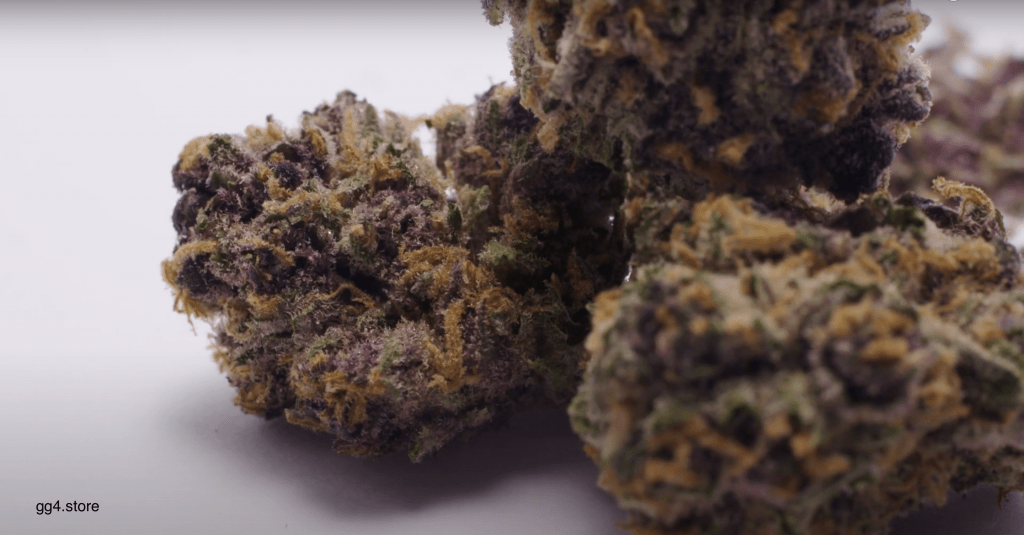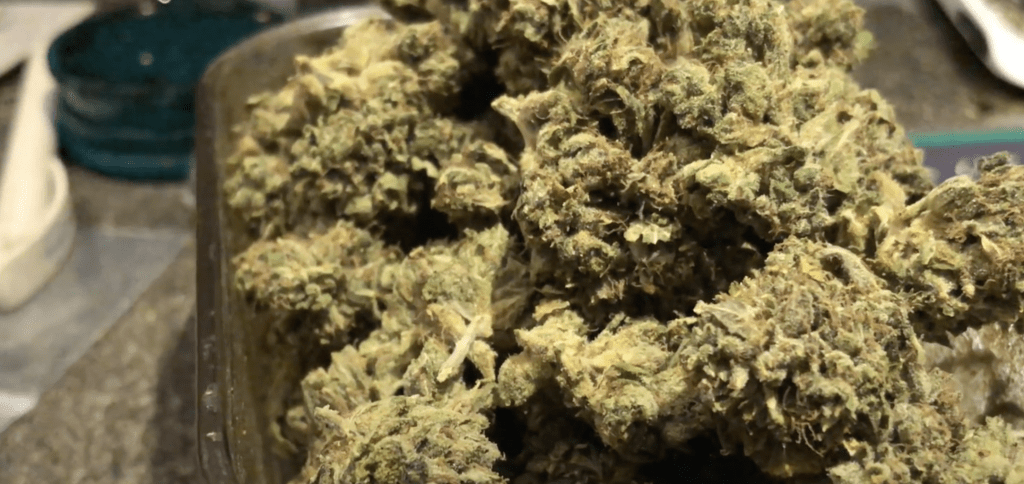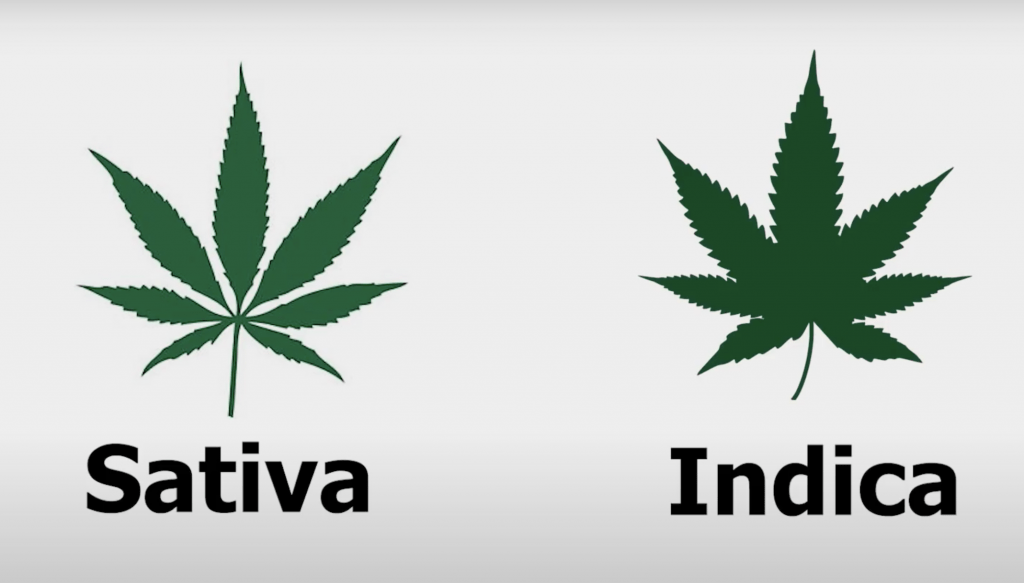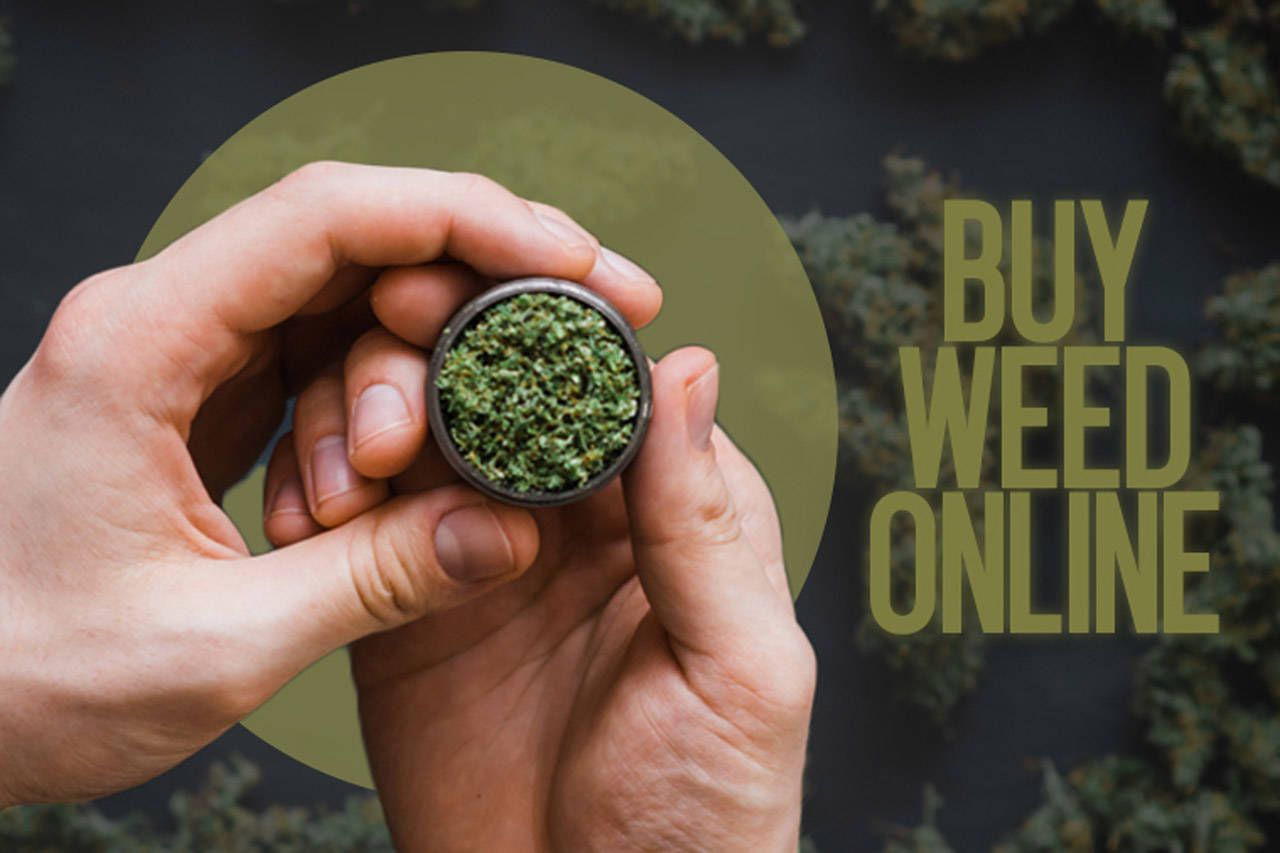Buying Weed Online: What to Choose?
If you enjoy buying weed online, you should ask yourself what to choose between indica, sativa or hybrid. Sativa and indica may be widely used terms to describe the effects of cannabis, but modern crossbreeding has all but rendered the terms useless. If you want to buy marijuana online in Canada, then here’s what you need to know about evaluating the effects of a strain beforehand. The terms indica and sativa have probably dictated every cannabis-related decision you’ve ever made. If you’re a novice, moderate, or veteran cannabis user, the first question you probably ask yourself every time you shop for a specific species of cannabis is whether you want the “body high” of indica, the “cerebral rush” of sativa, or the varied effects of a hybrid.

Where do Indica and Sativa Come from?
Together, indica and sativa have been the foundation of the cannabis lexicon since the mid-1700s. In 1753, Swedish botanist Carl Linnaeus identified psychoactive cannabis plants as Cannabis sativa in his work Species Plantarum, and 32 years later, French biologist Jean-Baptiste Lamarck identified Cannabis indica as a different species while observing the physical characteristics of India’s cannabis plants. Lamarck argued that C. indica plants have dark green, wide leaves compared with C. sativa leaves, which are light and narrow.
Fast forward to 1930, when Russian botanist Dmitrij Janischewsky identifies Cannabis ruderalisas the third subspecies. This time, it was not a result of unique physical expressions, but rather unique traits in the plant’s flowering cycle. Janischewsky noticed that while most cannabis plants begin to flower as a result of the changing available sunlight, ruderalis plants automatically began to flower between 20-40 days after sprouting.
Now, you probably haven’t heard your local budtender suggest a great new “ruderalis” strain. That’s because botanists never quite agreed on a definitive cannabis taxonomy.
What are Sativa Strains?
Sativa is a primary marijuana strain type known to be energizing and cerebral. Sativa strains are ideal for activities during the daytime that require physical activity or a high level of social interaction. In terms of effects, sativa strains provide a high for your mind, jumpstarting creativity, focus and mental energy. Use this list to explore sativa strains and their effects. Sativa strains are said to be energizing with uplifting cerebral effects that pair well with physical activity, social gatherings, and creative projects. Sativa plants are best known for being tall with thin leaves along with long flowering times. Sativa genetics evolved in equatorial zones and tend to thrive in long, hot summers where winters are short. Some of the most famous pure sativa strains include Jack Herer, Durban Poison, Moby Dick, and Amnesia Haze.
If you want to try sativas, it’s way more important to know cannabis genetics than it is to generalize the whole family. And with thousands of cannabis strains out there, all providing different effects, it’s a little daunting to choose which sativas to try — especially if you’re new to them.
List if the most popular sativa strains:
- Jack Herer. Named after the famous cannabis activist and author, Jack Herer is thought to be a complex mix of Northern Lights #5, Shiva Skunk, and Haze. The strain is known for producing a wicked mix of piney and spicy notes. One sniff and you may detect black pepper stacked on top of pine needles.
- Durban Poison. Durban Poison is a pure sativa landrace strain from South Africa on any list of best sativas that you’ve probably ever read. It’s beloved for having extremely sticky buds that provide a sweet, sometimes ammonia-like fragrance, sending your senses on a euphoric ride before the smoke even touches your lungs.
- Green Crack. Green Crack is another strain that you absolutely have to mention when talking sativa strains. Like most of the old school strains, no one can truly confirm the genetics, but Green Crack is believe to be a cross of between a 1989 Super Sativa Seed Club, a Skunk #1, and an Afghani landrace. The result produces dense, citrus-flavored buds that many love for their orangey-mango terpenes.
- Tangie. Tangie is one of those strains that you either love to death or you once loved to death and now you’re incredibly tired of it. That said, both situations mean that it’s amazing and should be in the lungs of each sativa lover at least once.
- Super Silver Haze. Super Silver Haze is well-known for being a great daytime strain that provides an energetic boost for anyone shaking off the cobwebs. It was created by crossing Shiva Skunk, Haze, and Northern Lights #5. The result gave the world an earthy and citrusy strain that makes most consumers report energetic, euphoric, and arousing effects.

What Does Indica Refer to?
Indica strains are most commonly associated with sedating and relaxing effects. The term indica is the Latin for “India,” the broad region where many pure indica strains originally evolved. Indica plants are short and bushy and are distinctly different from their sativa cousins. Indica strains grow best in harsh mountainous terrain with long, cool summers, and tend to flower much more quickly than sativa plants. Some of the most common indica strains include Northern Light, Bubble Kush, and OG Kush.
In the cannabis marketplace, both indica and sativa are heavily associated with their perceived effects. The classic indica definition, which it turns out is overly simplistic, is a strain that produces a strong physical high as opposed to a more cerebral high. For most cannabis users, the term indica evokes memories of haziness, couch lock, and deep relaxation.
The industry uses this pop-culture indica definition as a way to market indica and sativa cultivars (strains), and thousands of other cannabis products. But while the effects we typically associate with indica may have originated with the plant, there is no real correlation between the effects and the physical structure of today’s cannabis plants. The terms indica and sativa are far more useful for cultivators than for consumers. In cultivation, the terms are commonly used to describe the plant’s morphology, or physical characteristics, and its growing cycle.
Within the cannabis community, indica plants are often characterized as having sedative effects, which typically lead to an intense body high, while sativas are thought to be uplifting and produce more of a head high. Dr. Ethan Russo, a psychopharmacology researcher and board-certified neurologist on the forefront of cannabinoid research, explained in an interview published in the journal Cannabis and Cannabinoid Research, that “the sativa/indica distinction as commonly applied in the lay literature is total nonsense and an exercise in futility.” In reality, the effects of cannabis are based on the unique chemical profiles of each variety rather than a genetic lineage.
What is a Hybrid Cannabis Strain?
Hybrid strains are the result of crossbreeding cannabis strains from both the sativa and indica families. In modern times, hybrid strains comprise the majority of strains available on the market. Careful breeding over the years has enabled growers to combine the best properties of each variety into a new strain that exhibits a mix of the properties of the parent strains.
The original genetics of many pure indica or sativa lines are now increasingly rare. In fact, many strains listed as indica or sativa are actually hybrids that contain a mix of the genetic material from both families. Thanks to careful breeding, consumers can now enjoy many hybrid strains that often combine the traditionally sedating effects of indica strains with the uplifting and energizing effects of sativa strains.
Hybrid strains can be a combination of any plant varieties and will typically depict phenotypes that are either sativa-dominant, indica-dominant, or equally balanced. Hybrid weed plants may also contain genetics from ruderalis varieties, a third variety of the cannabis plant that isn’t dependent on light exposure to start flowering, a process known as “auto-flowering.”
Hybrids are great for people who want a balanced high. They are not as cerebral and psychedelic as a sativa can be, nor will they put you to sleep like an indica. This is a great place to start if you’re new to marijuana, but keep in mind that all bodies are different and will thereby react differently to various strains. So, the best way to find out what works for you is to go out and experiment. New hybrids are constantly being made by marijuana growers and testers, so there will never be a shortage of options to pick from!
List if the most popular hybrid strains:
- OG Kush. Since its birth in the 1990s, Original Kush, better known as OG Kush, has been the backbone of California cannabis culture and genetics. As a result, there isn’t a strain out there that hasn’t been crossed with it; and usually, no matter the cross, those Kush attributes tend to be pretty dominant. Despite its fame, none of us really know for a fact which exact genetics created OG Kush. All we know is how it should make us feel.
- Skunk #1. In the same breath as OG Kush and its influence on modern hybrids, we also have to mention Sam the Skunkman’s Skunk #1. It’s a classic cross of Afghani, Acapulco Gold, and Colombian Gold and is world-renowned for producing a pungent funk that smells like a skunk. Additionally, since the 70s, it’s been used to create many of the world’s favorite strains, UK Cheese being the most popular.
- Chemdog. This legendary strain, whose story began as some bagseed found at a 1970s Grateful Dead concert, is the reason why we all love cannabis flowers that produce a diesely flavor profile. Like most old school strains, no one really knows its genetic history. What we do know is that famous chemmy terpene profile and the extremely potent high that follows.
- White Widow. White Widow is so fun to smoke. It’s truly one of my go-tos when I want a strain that’ll make me feel happy and care-free. And the flowers are beautiful with a thick, white coat of trichomes. White Widow was bred by crossing a Brazilian landrace with a South Indian landrace. It’s the perfect hybrid in terms of a long-lasting experience with effects that won’t bog you down. Anyone looking for a relaxed yet social high can probably stop right here.
- GSC. Formerly known as Girl Scout Cookies (but changed to GSC for legal reasons) this strain is the pride and joy of the Bay Area’s famous Cookie Fam. It’s a cross between Durban Poison and OG Kush that produces incredibly high THC percentages and long-lasting cerebral effects that apply to any time of day, much like OG Kush.

Indica vs Sativa Similarities and Differences
Naturally, the similarities between the types of strains are significant. For example, all three are associated with a sense of altered perception and euphoria. All three have medical application for people suffering from a variety of different symptoms including pain, anxiety, chronic diseases, insomnia and so much more. Conversely, all three do have a similar slew of negative side effects. These negative side effects include fatigue confusion short term memory loss and a sense of fear or anxiety. With excess use, some people experience headaches, slurred speech, and depression. These side effects are not experienced by all users and are more common in people that are underage.
As discussed above, we already know that indica and sativas have different psychoactive and physical effects because of their cannabinoid and chemical composition. These two types of plants also have unique growing cycles, THC/CBD ratios and terpenes which separate themselves from each other. Both indica and sativa grow through the same vegetation cycle. If grown outside, the vegetation cycle is dictated by the amount of sunlight shining from late-spring to early summer. But when grown indoors, a grower can decide how short or long they want to make this cycle. Their flowering cycles are what make them different.
Indica plants have shorter growth cycles, produce more buds for harvest and grow faster than sativas. The flowers appear most prominently near the nodes of the plant, where leaves separate from the stems on the plants, and bud in a 6-10 week cycle.
The flowering cycle is slightly different compared to the indica plant. Cannabis sativa typically has a longer flowering cycle ranging from around 10-12 weeks before it can be harvested. However, there are some sativa strains that can take 16 weeks or longer to fully flower.
As mentioned above, indica buds typically have a higher CBD to THC ratio compared to sativa plants. But it’s important to note, that this isn’t always the case because of cross-genetics. For instance, Charlotte’s Web, the high CBD strain was created by the Stanley Brothers and is classified as a sativa. So you’ll never really know whether you’re smoking indica or sativa based on the cannabinoid percentage, that is only determined by the strain’s genetics.
Future of Marijuana Genetics
For as big and as rich as marijuana’s past has been, the future seems even brighter. Two important developments are occurring simultaneously to make this so.
On the one hand, cannabis acceptance is higher than it has ever been. Each year more and more states decriminalize or completely legalize the use of the marijuana plant. Perhaps as a direct result of this, the science surrounding marijuana has also drastically improved.
As marijuana science continues to advance and manufacturing moves over to the private sector it seems very likely that researchers will be able to do impressive new things with the cannabis plant.
One of the most important of these developments will be the isolation of various cannabinoids and chemical components of cannabis such as CBN, CBG or CBC. Selective attention to specific terpenes or THC levels can radically shape the user experience, not to mention the radical changes in the colors, look and smell that these new strains put off.
The more that researchers learn about the plant, the better able they will be to provide a tailored experience.
On the boring business side of the equation, this may mean hyper-precise patents on custom marijuana products. For consumers, it means there will be more and better options available in dispensaries all across the country.

